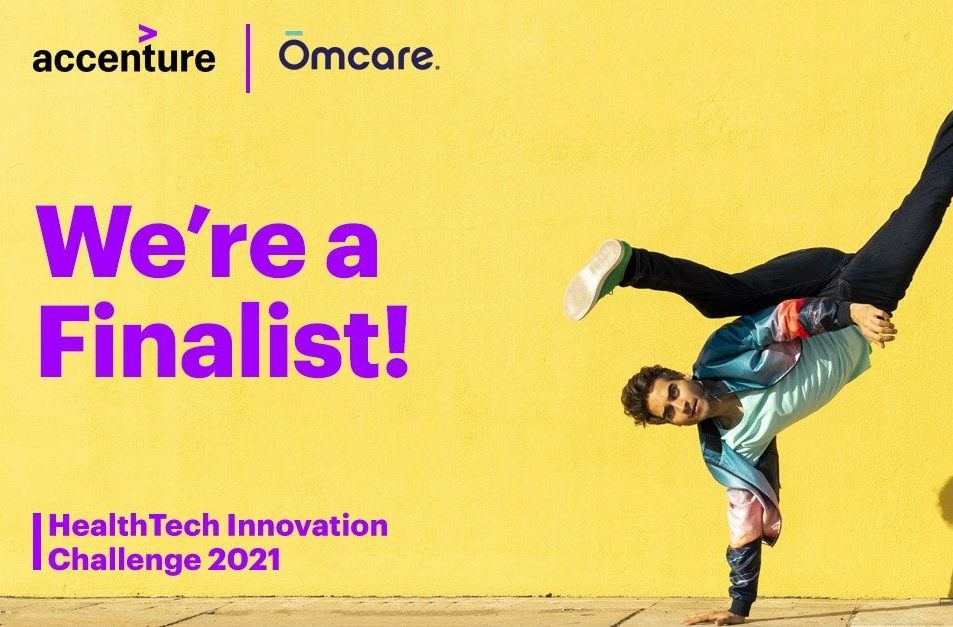Telemedicine equipment: 6 most common tools used in healthcare
In the last few years, the use of telemedicine has been on the rise. As new technologies make it easier than ever to connect via the internet, patients and healthcare providers across the globe are choosing to embrace telemedicine as their normal form of care.
In 2020, the pandemic caused a drastic increase in the use of telemedicine equipment out of necessity. But statistics from Medical Economics show that it’s certainly not just a fad, and we can expect the use of telemedicine to stick around, and even increase. Here’s what they report:
- 83% of patients say they will continue to embrace telemedicine in a post-pandemic world
- Over 50% of patients are willing to use telemedicine to meet with a new provider if its convenient
- 91% report telemedicine helps with prescription refills, making appointments, and overall health management with virtual check-ups with their providers.
- 93% say they would use telemedicine to better manage their prescriptions
The reason these stats keep climbing is in part due to more telemedicine tools that help connect patients to their providers. Today, we're listing some of the best and most common and useful pieces of telemedicine equipment that providers should enlist to ensure adequate and streamlined telemedicine services.
https://youtu.be/PLp6U5mUMQQ
6 Common Pieces of Telemedicine Equipment
High-speed internet
The number one thing needed to ensure streamlined, uninterrupted care via telemedicine is high-speed internet that can support the constant stream of sharing data back and forth. Clinics and patients should speak with their internet provider about the bandwidth needed to ensure successful interactions.
High-def webcams
Most laptops and portable smart devices have built-in cameras for easy video calls s, but desktops can allow you to have higher definition webcams. For many doctors, it can be worthwhile to get a top-of-the-line webcam so there are no issues with pictures or connections. Here's a list of the best webcams for telemedicine.
Tablets
Tablets allow doctors to access medical records and secure patient information on-the-go. Some brands that offer secure tablets for medical use include Advantech, Cybernet, Teguar, and Estonetech.
Visual aids
Visual aids can enhance virtual telemedicine by allowing patients to better understand their conditions, care plan, and other factors. It can be the best way to help explain pain scales, procedures, care plans, and more via video chat. Some examples of visual aids include a pain scale of 1 to 10, anatomy of the area receiving surgery, or even a photo chart of symptoms like skin rashes or something they can compare their symptoms to.
Remote vital monitoring
At your provider’s office, they will often measure your blood pressure, note your weight and height, and take any other necessary vitals. Now, many of the same devices your doctors use can be used at your home. Vital monitoring devices like at-home blood pressure devices and pulse oximeters can read that information and send it directly to physicians. These devices are especially useful for people managing chronic conditions. Useful remote monitoring devices include:
- Blood pressure devices
- Bluetooth enabled scales
- Digital thermometers
- Blood glucose meters
- Pulse oximeters
- EKG monitors
Electronic pill dispensers
Telemedicine also includes prescription management, which can be done with the help of electronic automatic pill dispensers. Certain e-Pill dispensers include video chat that enables patients to discuss their prescriptions with their doctor or pharmacist. Care teams can track usage and prevent missed doses or overdoses via these devices.
Our Ōmcare Home Health Hub® allows easy access to speak with doctors, pharmacists, and caregivers. This streamlined approach improves medication adherence and allows people managing chronic conditions to have the best possible care from home.
If you or a loved one are looking to embrace telemedicine for medication management, consider reaching out to Ōmcare for more information. We are dedicated to providing the best, most accessible device for people looking to improve their medication management.
4 telling medication adherence statistics (updated for 2022)
Around 66% of people in the United States take at least one prescription medication. The average number of prescriptions taken is 4 per person, but that number rises significantly for those treating chronic conditions. Regardless, medication is one of the largest expenditures in the healthcare industry to date (over 10% of all healthcare spending).
With patients shelling out money, one might assume people manage their medications well and always take them on time and in the right dose. However, this is certainly not the case.
It's estimated that just half of the people who are on regular medication take the proper doses at the proper times. Taking medications appropriately is called medication adherence, and it's a critical detail that can gauge the success of treatment. It is a metric that doctors and healthcare plans are always striving to improve.
Throughout the pandemic, there have been a lot of shifts in the healthcare industry—from embracing more telemedicine to making changes to care plans due to limited access to in-person appointments. Because of this, we've discovered some astounding medication adherence statistics and how it's changed or will change, in the coming years.
https://youtu.be/Qh84l557-D0
4 Telling Medication Adherence Statistics
The top reason for medication non-adherence is forgetfulness
In the last decade, Express Scripts ran a multi-year pilot study to figure out the main cause of medication non-adherence. They went into the study thinking cost and accessibility would be the biggest reason: they were wrong.
They found that of the 600,000 patients, 39% simply forgot to take their meds, 20% did not renew scripts on time, and 10% put off refills resulting in multiple missed doses.
Over 125,000 premature deaths per year caused by medication non-adherence
In 2014, non-adherence was the 6th most common cause of premature death in America. That's an incredible, and expensive, statistic. These preventable hospital visits, stays, and deaths cost the healthcare industry hundreds of billions of dollars per year.
Over half of patients with mental illness are non-adherent
Statistics show that between 40 and 60% of patients who are mentally ill have poor medication adherence and rarely take their medications on time, if at all. Uncontrolled mental illness lead to the climbing rates of unemployment, homelessness, and suicide which sits in the top 10 causes of death in the United States.
Better adherence could help prevent 89,000 hypertensive deaths
Hypertension puts you at risk for heart disease and stroke which continue to sit in the leading causes of death among American adults. Treatment for hypertension includes lifestyle changes like diet and exercise but also critical medications that help lower blood pressure. Nearly 50% of Americans have improperly medicated hypertension. This highly preventative and curable disease accounts for $106 billion of added costs each year.
Tips for improving medication adherence
Improving medication adherence not only saves lives but saves money, time, and suffering caused by missed doses. Luckily there are some ways to improve medication adherence on both the patients’ side and the providers.
Pharmacy subscriptions
Procrastinating on refills was one of the leading reasons for poor medication adherence, and one way to solve that issue is by having pharmacy subscriptions and delivery. No longer do people have to worry about calling in their script or heading to the pharmacy to pick it up. Auto-refills and home deliveries can improve that issue significantly. Even Amazon offers pharmacy subscriptions now for ease of use.
Mobile app reminders
More and more providers are getting on board with mobile applications that allow patients to manage care, appointments, and prescriptions all from their device. A mobile app keeps information secure but also allows for direct communication. Patients can send or update their prescription right from their phone and send that information directly to the pharmacy in minutes.
Live consultations
Pharmacists and providers should continue to offer, and encourage, live consultations with their patients. Patients may feel ashamed of going in and speaking to a pharmacist about their meds or chronic conditions, so offering it online from the comfort of their own home might help alleviate that desire to procrastinate or avoid speaking to someone.
Text/call reminders
Seniors account for one of the greatest percentages of prescription use and non-adherence. But many of them do not have smartphones. Call and text reminders continue to be a highly effective method of reminding adults to fill or take their meds.
Automatic pill dispensers
The physical management of medications is another way to help improve medication adherence. Daily pill organizers can help, but automatic pill dispensers are the way of the future. They ensure patients have an alarm and a second point of reminder. Then the meds are dispensed to them, accurately and on time.
With the Ōmcare Home Health Hub®, we ensure patients not only get their meds dispensed in the correct dose at the correct time, but they can actually speak with their providers, pharmacist or caregiver in real-time to get advice, discuss their care plan, and receive the support they need to increase adherence.
We believe improving medication adherence is one of the #1 ways to save lives, and we are happy to play a part in that change. If your clinic also wants to commit to improving medication adherence in the form of automatic pill management, reach out to Ōmcare today.
Telehealth vs telemedicine: What's the difference?
Despite often being thought of as the same thing, telehealth and telemedicine actually mean incredibly different things. Often used interchangeably, they should not be confused with one another.
The confusion is to be expected, especially with both terms being thrown around more than ever now. The COVID-19 pandemic greatly affected the world of telehealth and telemedicine with more places making the shift to provide such services amidst lockdowns and overloaded hospitals.
The CDC stated that very early on in the pandemic, in-person healthcare visits declined by nearly 60% across the United States. But telehealth visits rightfully increased, accounting for nearly 30% of all care provided.
This wasn’t always easy, however. Prior to the pandemic, physicians were often required to have special licensure to provide telehealth care to patients. However, currently, 18 states have waived such requirements. It’s not clear if this is temporary or not, but there is a lot of push to make virtual care a vehicle that sticks around long after the pandemic.
The ability to make such shifts has been an amazing way to ensure patients across the country get the care they need. These may include therapy, prescription reviews, or consultations.
So today, we're going to clearly define these terms, explain why each is so important in healthcare, and discuss why we believe it’s here to stay.
What is telehealth and why does it matter?
The use of the internet has changed our lives in so many ways—both positive and negative. But the pairing of technology and healthcare has completely transformed how we can deliver information and care to patients.
Telehealth is a revolutionary way to access healthcare services remotely and manage your medical needs. With the use of digital information, computers, or mobile devices, one can gain quick and easy access to information and applications that help provide better support with treatments and healthcare management.
The benefits of telehealth include:
- Making self-management easier and more convenient
- Improving communication between patients and their care team
- Making healthcare services more accessible to patients living far away or who have limited mobility
- Providing easier access to healthcare specialists
While telemedicine is centered around patient care, telehealth focuses on using technology to better manage health, access data, and track care plans. Here are some great examples of how telehealth can be used in real life.
The added convenience of virtual doctor appointments.
Doctors can provide online consultations for their patients. This is especially helpful if you need a last-minute appointment or live far away from the doctor's office.
These virtual visits allow doctors and patients to access information by video conferencing with one another either through an app on your phone or computer that allows for live video chat.
Things like Doctors on Demand can allow for quick virtual visits as opposed to making a trip to urgent care. People can virtually connect with a doctor for things like rashes, common viral infections, prescriptions refills, or other minor concerns.
This can allow the doctor to assess a patient's needs quickly, send an antibiotic to the pharmacy, and save a ton of time for patients and providers alike.
Remote health monitoring for patients with chronic conditions.
Patients with chronic conditions can now use technology to monitor vital signs like blood pressure, blood sugar levels, heart rate, respiratory rates, and oxygen levels from the comfort of their own homes.
This is a great way to help individuals avoid unnecessary emergency room visits or procedures that could have been avoided if care had been managed appropriately.
Telehealth is an excellent way for patients and doctors to interact using technology to manage a medical condition or monitor a chronic disease at home, where the patient feels most comfortable. It also allows patients and physicians to have the most up-to-date and accurate data to adjust treatments accurately and quickly.
Patients modernize their care with portals and apps.
Patients can download apps or use online portals to access their own health records, schedule appointments, refill prescriptions, and communicate with their healthcare providers.
These are great tools that allow patients to manage their medical information on the go from any location, at any time. In some cases, this also means their data is centralized so it’s easier to access and send to other providers for second opinions or ongoing healthcare maintenance.
More convenient correspondence between physicians.
Patients can log in to a patient portal and message their physician's office with questions or concerns. This allows for more timely communication between patients and providers.
In addition, doctors need to speak with other doctors often to discuss a patient's case, health management, and other factors. Telehealth allows them to quickly and securely share and access sensitive patient information in a secure platform and respond in real-time.
How does telemedicine differ from telehealth?
Telemedicine is a subset of telehealth that refers solely to providing healthcare services across long distances. For example, people living in remote areas or those not able to easily leave their homes due to mobility issues.
It still involves using technology like video chat or wireless communication to provide healthcare services from a healthcare provider, but with more emphasis on remote areas that do not have access to in-person healthcare. Particularly, access to specialties and other complex health care.
The benefits of telehealth and telemedicine are great. Thanks to technology, it has never been easier to monitor your health or receive quality care, all from the comfort of your own home or mobile device.
Ōmcare plays a big part in both telehealth and telemedicine. Our at-home device allows quick access to providers and monitored and secure disbursement of medications without the need to drive to a pharmacy or manage individual prescriptions.
If this sounds like something you need, please don't hesitate to reach out to us and get started on improving your or your loved one's personal healthcare management.
4 best automatic pill dispensers for seniors at home
Are you having trouble getting mom to take her meds? Don’t fret—there’s a device that can help.
Automatic pill dispensing devices are well-designed to help those with chronic diseases where successful medication management is often the key to better health. In addition, it helps those who find it difficult to remember to take their pills on time. In this post, we will discuss the best automatic pill dispensers available.
Things to consider when choosing an automatic pill dispenser
Before you purchase a new pill dispenser, there are a few key things to consider that could sway your decision. Let’s walk through different factors to help you decide which product is best for you.
-
Medication compliance
A pill dispenser will always hold enough pills for their regular doses, so they’ll never run out.
-
Size & design
It's important that your automatic pill dispenser fits nicely on a nightstand or bathroom countertop. You want it to be accessible and easy to use.
-
Programming
Easy-to-use pill dispensers are vital to getting the most benefits out of the device. They shouldn’t require extra programming or tech-savvy users.
-
Features & capabilities
Many of these devices come with alarms, timers, lockable compartments, and even tracking abilities.
-
Price
The price range for pill dispensers varies depending on the brand and features you choose to include in your machine. Be sure that it's within your budget before making a purchase.
-
Product reviews & ratings
Don't just go with our list, research other trusted sites to find out what others think about each product.
The best automatic pill dispensers
There are many types of pill dispensers that can help those who take a lot of medications every day, making management difficult. These devices range in price, complexity, and security features but all come in incredibly handy for medication management and improving medication adherence. Here's a list of the best automatic pill dispensers for seniors.
MedCenter System With Alarm
Despite being less high-tech than some of the other medication dispensers out there, the MedCenter 31-Day pill organizer and reminder system gets the job done. It's incredibly user-friendly, making it a simple solution for seniors living alone who need some assistance managing and remembering their meds without the fuss of technology.
The MedCenter System allows them to put a whole month's worth of medication into the system, pull out each day's pills, then have a recurring alarm (or multiple alarms) for taking their pills every day at the appropriate time. The one downside is that it has to be manually refilled every month. However, it still saves time, energy, and the pain of having to organize pills every single day.
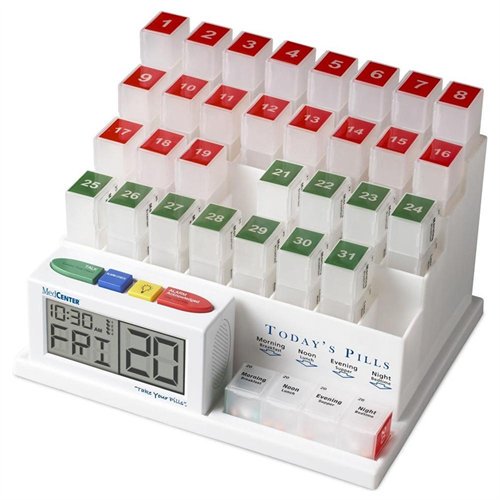
e-Pill MedSmart Plus
The e-Pill MedSmart Voice Pro is a step up from the MedCenter in that it has added security measures with a lock and key to keep out anyone who shouldn't have access to the meds. Also, it can be loaded by a caregiver, and the patient can only have access to pills at their appropriate time. It is Bluetooth enabled and can connect to a mobile app to get easy reminders, alarms and track medications throughout the month.
This pill organizer and dispenser is ideal for seniors who want to live more independently and those with caretakers who want an easy solution to help their patient manage their medication on their own. It's also perfect for those who are hard of hearing as it can have up to 9 alarms throughout the day, paired with a loud voice notification of "it's time to take your medication" and blinking lights.
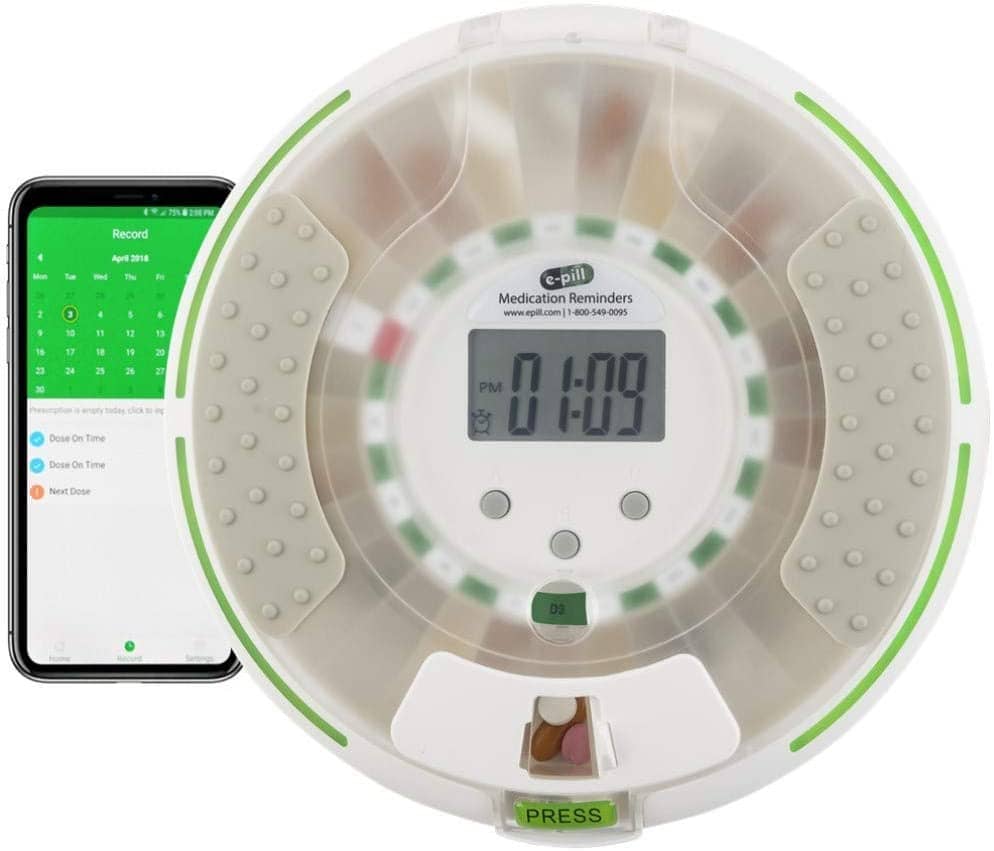
Pria Automatic Pill Dispenser
Pria is a combination medication assistant, video chat, and automated medication dispenser in one. It holds up to 28 days of pills (with 10 in each section) or two weeks if you have morning and night doses. The device gets loaded each month with all the necessary daily pills, then alarms and notifications can be set up and paired with a mobile app.
The application allows family members, caregivers, and physicians to gain access, see that medications were taken, and make necessary adjustments based on results. Users can also get support via the built-in video chat system, and physicians can also reach out via the call feature.
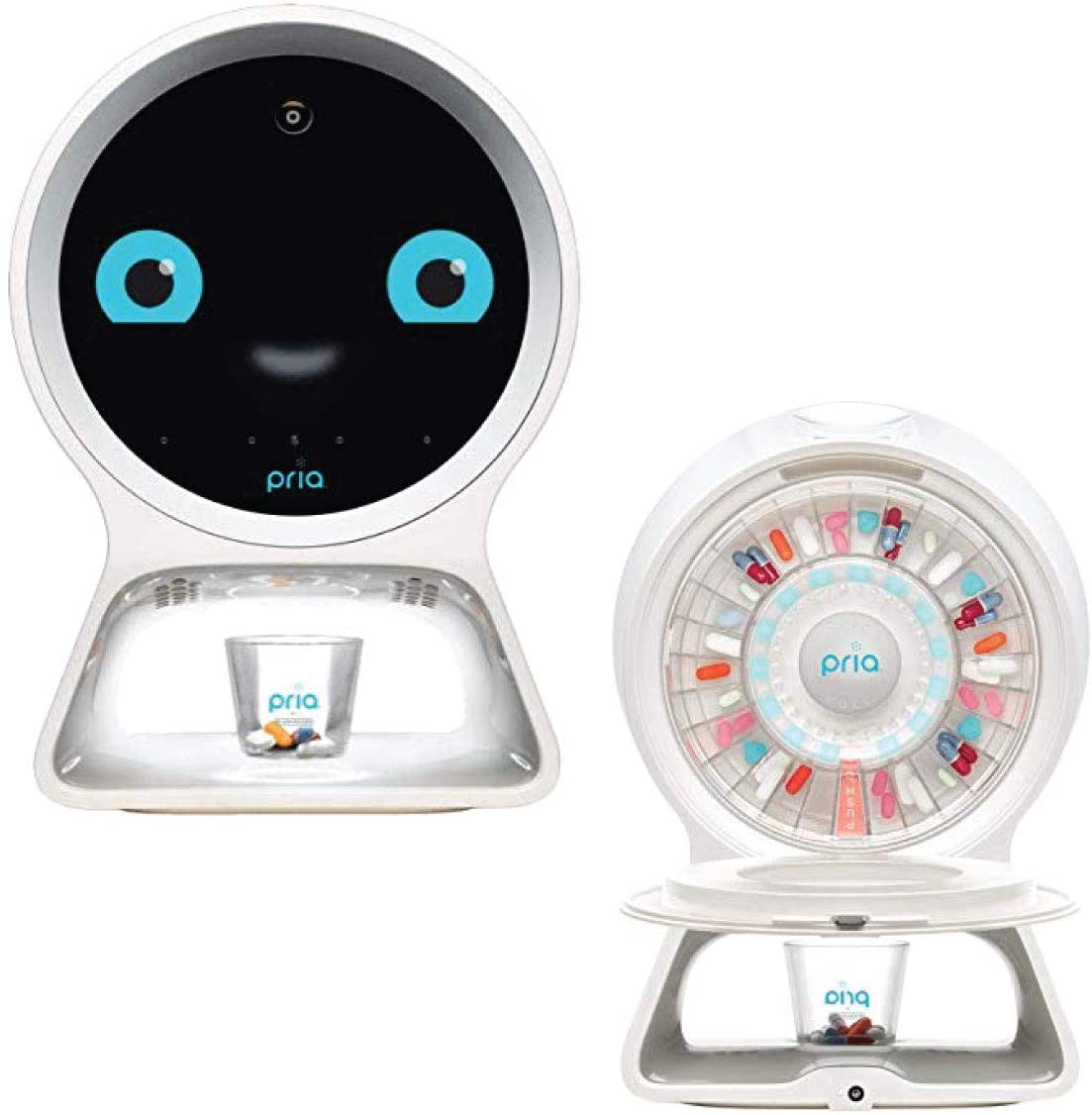
Ōmcare's Home Health Hub®
Ōmcare's Home Health Hub® has combined the convenience of prepackaged medication with immediate access to healthcare providers into one simple package. Not only is medication prepackaged in easy-to-load packs, but they are shipped right to the user's door when needed.
The video feature on our Home Health Hub allows for the user, family members, caregivers, and physicians to check in regularly to allow treatment, medication adjustments, and maintain a virtual relationship. Video check-ins can help ensure that medication is being taken and provide family members with peace of mind.
There are a lot of benefits to automatic pill dispensers. Although they can be expensive upfront, you get what you pay for when it comes to quality and safety.
Keep your loved ones safe, on track, and help manage their chronic illnesses with ease. Reach out to Ōmcare to get started on the next level of medication management with a user-friendly automated pill dispenser.
AARP's AgeTech collaborative is linking start-ups, financing, industry
Many people age 50 and older are more savvy about technology than they are often given credit for.
They use technology daily in the workplace and at home. Social media has exposed them to marketing for new devices and apps. Plus the pandemic has forced them to adapt quickly to ideas they might have been hesitant to try a couple of years ago.
“And they’re expecting products and services that meet that level of sophistication,” says Rick Robinson, vice president for start-up engagement at AARP Innovation Labs.
It has driven AARP and its affiliated AARP Innovation Labs to launch the AgeTech Collaborative, an ambitious community of early stage start-up companies, entrepreneurs, venture capitalists, service providers and industry leaders brought together to spark ideas and spur innovation. The promise is that the collaborative will benefit all of them while ultimately serving the greater good of older consumers they are hoping to impress.
Read the full press release here.
6+ telling benefits of medication synchronization (for patients)
Medication synchronization helps ensure someone doesn’t miss a dose. But it goes even beyond that; there are many advantages to medication synchronization in addition to limiting trips to the pharmacy. Today, we'll talk about what med sync is, its telling benefits, and why it's so important.
What is medication synchronization and how does it work?
Simply put, medication synchronization is the process of filling prescriptions and collecting them on a single day each month instead of having prescriptions filled as soon as they're written or collected from the pharmacy as patients need them throughout the month.
Instead, all prescriptions are filed one time each month, drastically reducing the number of trips to the pharmacy and added convenience for people taking multiple prescriptions.
When prescriptions are filled and picked up on one day each month (as opposed to when they're refilled), it creates peace of mind for everyone involved. For patients, it means they never have to worry about running out of a needed medication because they can't keep track of all the varying refill dates.
By syncing up 28-day, 30-day, 60-day, and even 90-day scripts, there's a consistent cycle of refills happening at all times. This benefits the pharmacy because they have fewer prescriptions to fill all the time (and eliminates people forgetting to pick things up) which can lead to better adherence data for them as well.
What kinds of medications can be synched?
Patients who take multiple medications for any condition can benefit from medication synchronization. Even patients who take a single prescription that requires regular refills will see benefits, as it reduces trips to the pharmacy and eliminates any concerns about running out of medications due to timing issues.
How does it work?
Pharmacists play a big part in managing prescription syncing. They take the time to review patient prescription lists and accurately formulate a plan to get them synced up. The pharmacist then does a few partial fills to sync up all meds to a single date. Often, they'll also schedule monthly or bi-monthly follow-ups for patients to discuss the medications and ensure everything is on the right track.
What are the benefits of medication synchronization?
The obvious benefit is that patients don't have to go to the pharmacy every month, which reduces stress and eliminates a potential source of anxiety. However, because it's such a big part of what pharmacists are trained to do, medication synchronization also ensures accuracy and attention to detail. It also improves patient health by ensuring they're getting the proper medications at the right time.
Medication synchronization is just another way that pharmacists are making prescription management easier for patients everywhere.
All the benefits of medication synchronization include:
- Eliminating unnecessary repeat trips to the pharmacy each month, which saves time and money.
- Minimizing confusing or conflicting refill dates.
- Reducing delayed or missed doses due to missed refills.
- Pharmacists have more insight and control into patients' medication lists, preventing contraindications, duplicate drugs, and other issues.
- Ensuring the right drugs work with the others and that the proper treatment plans are given.
- Improving medication adherence
- Giving caregivers peace of mind
Medication synchronization is not a new concept. Still, it wasn't until recently that pharmacies started making medication synchronization standard practice.
The average person visits a pharmacy 35 times per year but only sees their doctor four times. By syncing up scripts, pharmacists can cut this number by more than half and allow more convenient prescription refills. Many companies offer mailed prescriptions and automated subscriptions and can help medication adherence rates skyrocket.
Patients don't have to worry about going back and forth between pharmacies anymore—pharmacists make sure they're synchronized, so doctors' instructions are followed as intended. Nor do they have to wait for a pharmacist to reach out for medication refill reminders. And that's a win-win for everyone.
For even more automated prescription management and administration, check out Ōmcare's Home Health Hub. The Home Health Hub offers easy, fast medication management and administration, plus free med delivery in monthly rolls that bundle all necessary medications into one convenient package. Reach out to learn more!
Automatic pill dispensers for people with Alzheimer's: simple options for 2021
Remembering to take medication can be difficult for anyone, but especially those in the early stages of Alzheimer's. Alzheimer's is a progressive disease that affects mental function and memory, making it difficult to do daily tasks, including taking medication.
However, there are some simple ways to ensure people with Alzheimer's take their medication on time, every time, without constant supervision.
Automatic pill dispenser for Alzheimer's patients
Automatic pill dispensers are one of the greatest ways to improve medication adherence, prevent double dosing, and ensure you or your loved ones take the right pills, every time. Pill dispensers have come a long way from the 7-day pill organizer box, and now come with all various features that make it as easy and automated as possible.
Of course, someone with Alzheimer's is not always going to be able to manage their own medication, even with an automatic dispenser. But there are a few simple options to choose from depending on their level of cognition and independence. Below are good options if you are looking to purchase an automatic pill dispenser.
Easy-to-use pill dispenser
Some dispensers require a somewhat tech-savvy end-user. However, there are a few pill dispensers that are very user-friendly and allow people in the early stages of Alzheimer's to remain independent by managing their own meds.
MedCenter Monthly Pill Organizer
Although this isn't exactly an automated pill dispenser, this simple alarm clock pillbox is super easy to use and is a more advanced pill organizer. It requires very little technical knowledge and can be easily loaded every month by a helper or home health aide, and then alarms will ring each day to alert the user to take their meds.
Alarmed pill dispenser
For a more advanced option, this alarm pill dispenser is highly user-friendly and signals a loud alarm or flashing light to alert users with both memory and hearing impairment that it's time to take their medications. MedReady Automatic Pill Dispenser
The MedReady automated pill dispenser is a simple design but works just as effectively as some of the high-tech versions. The basic design allows users to load 28 days of pills in the locked case, holding up to 5 large pills or 10 smaller pills. In addition, the device can have up to 4 alarms set per day, and they can run for 30, 45, 60, or 250 minutes to allow users ample time to hear and respond to the alarm. It also comes with a rechargeable battery so that it can be taken on the go.
Also, their upgraded versions include a red light for the hearing impaired, a land-line connection to alert emergency contacts of a missed dose or a wireless plan that alerts the MedReady website of missed doses and other alerts.
High-capacity pill dispenser
The Hero automatic pill dispenser can hold up to 90 days worth of medication and also includes all of the benefits mentioned above, such as ease-of-use and alarm capabilities, but with more technology and support included in the monthly package. It will also notify caregivers or emergency contacts if a dose is not taken and the alarm is never turned off. This is essential to providing proper medication dispensing, which is also tracked in its automated medication adherence tracking.
Smart pill dispenser with locking capabilities + more
Last but definitely not least, the Ōmcare Home Health Hub offers all of the above plus telehealth capabilities. Not only can people with Alzheimer's ensure they take their meds on time thanks to alerts, the automatic pill dispensing, automated medication delivery, and ease-of-use, but they can converse with their healthcare support team right from the device.
They can also connect with family members and other caregivers, which can be used as an additional way to improve medication adherence, particularly with those with memory issues. Speaking to a nurse every time they take their meds or review their meds each month creates a solid feedback loop to keep medication on track and prevent dangerous double dosing.
Overall, Ōmcare has the best automatic pill dispenser for Alzheimer's patients if you're looking for a solid, fail-proof solution. To find out what we can do for you or your patients today, contact us here.
Ōmcare joins fellow home health leaders to discuss the future of care
Minneapolis: October 13, 2021 – Ōmcare will join leaders in home health for the 5th Annual ConVerge2Xcelerate 2021 Symposium (#ConV2X) held November 9 – 11. The symposium will feature U.S. home health leaders to discuss advancing business critical regulation and policy reforms, market gaps, and the future of this burgeoning industry sector.
ConV2X 2021 is the acclaimed health technology modernization symposium focusing on health policy, telehealth, blockchain and artificial intelligence and connectivity in a refocused healthcare market. It is the premier destination community identifying new and cost-effective paths forward through real world evidence, strategy, operations, research & trends, where healthcare leadership and breakthrough technology providers inspire and guide informed decision making for niche markets in the exploding digital health marketplace.
“We are continually seeing the conversation become more prominent around getting care into the home. Aging in place not only allows individuals to maintain their independence for longer, but it’s a cheaper way to still provide high-touch care. Ōmcare is honored to join other companies that are helping win the home and provide even better care, at a lower cost, that also relieves burden on the healthcare workers shortage.” Lisa Lavin, Ōmcare CEO and Founder.
To understand how technology is empowering peace of mind in the home, sign up for the virtual conference today.
About Ōmcare
Ōmcare is a digital health company pioneering an open access, home health platform that allows healthcare organizations to extend care into the home via a secure telehealth infrastructure and integration with their patented medication dispensing technology. Based in Burnsville, MN, Ōmcare enables remote delivery of wrap around care coordination and integration of existing virtual care and remote patient care solutions, promising real medication adherence defined as right med, right time, right person. Ōmcare is currently in pilot and experiencing promising results.
6 of the best medication delivery companies compared (2021 update)
Today we can get just about anything delivered. Do you want Mcdonald's delivered at 2 am? No problem, order DoorDash. Do you need to furnish your new home but don't have a truck to haul furniture? No worries, Slumberland will deliver everything to your door (and carry it inside)! But what about medication?
Pharmacies have long offered prescription delivery services but with less-than-convenient times and offerings. Thankfully, that has changed significantly in the last decade to the point where there are dozens of prescription delivery service companies to choose from. Choosing one can be overwhelming, so we thought we'd help by narrowing down a list of the best medication delivery companies in 2021.
PillPack
PillPack is one of the most popular names in prescription delivery, and even more so after being purchased by Amazon Pharmacy in 2019. PillPack has changed the game when it comes to medication management. They offer free home delivery, and users only pay for their med copays, PillPack takes care of the rest.
After signing up, users send in their medication details, then PillPack works with their doctors or pharmacies to sort out all prescription and non-prescription items (like vitamins and supplements). Then, everything is delivered in conveniently packed daily pouches. It's easy, affordable, and convenient.
Capsule
Capsule currently only delivers to 13 major cities around the country, including the Twin Cities (and their surrounding zip codes). Still, they are well on their way to becoming one of the most used prescription delivery services around. Capsule offers same day delivery of your prescriptions, even if you're a new customer.
They have pharmacists who care and want to make it as easy as possible for anyone to get their medications delivered to their door with no hassle. Capsule can become your new pharmacy with the help of your doctor and accepts any insurance.
ExactCare
ExactCare is one prescription delivery service that goes beyond just convenient home deliveries. They also partner with nursing homes, home health workers, and manufacturers to create a more well-rounded medication management system and help improve patient health outcomes.
In addition to packaging and delivering medications to your home, ExactCare also provides comprehensive support services to ensure your medication is managed and adjusted to be as effective as possible, especially when treating chronic diseases.
ZipDrug
Recently merged with IngenioRx, ZipDrug is making huge advancements in medication adherence and prescription care for patients with chronic conditions. However, they are opposed to common industry issues like Medicare Advantage patients being prescribed the most expensive option, more recurring medications, and paying way too much in general. So, ZipDrug steps in and connects people with the best, most affordable pharmacies in their area who work best for their health plans and their care.
They even reward pharmacies who take steps toward improving medication adherence in patients who get drugs delivered by ZipDrug. It's a win-win for everyone and provides beneficial pharmacy services on the go.
DivvyDOSE
DivvyDOSE is very similar to PillPack since they package all of a patient’s medications into one neat daily pouch that you can just open, take your meds, and go on living your life without worry. The convenience factor is huge, not to mention free delivery, free packaging, and they accept all major health insurance plans.
With DivvyDOSE, you'll never run out of refills because they remind you and take care of contacting your doctor. They will also include a small medication card that fits into a wallet, so no matter where you are, you always have your most up-to-date script info.
Simple Meds
A small team with a big purpose, Simple Meds is adding to the top contenders changing how prescription drugs are managed for good. No one should have to worry about how or when their prescriptions are getting filled. With Simple Meds, members get simple, easy medication management with no hidden fees.
 Finding the Best for You
Finding the Best for You
Many similar companies are paving the way for better and more advanced medication adherence efforts. Most companies will work with your insurance company, get your prescriptions filled, and deliver them right to your door, hassle-free. But these companies mentioned above have proven to be some of the best in the industry, and we're excited to follow where they go.
Of course, we'd be remiss not to mention Ōmcare's efforts to improve medication management as well. For example, our convenient prescription delivery service ensures our Home Health Hub stays fully loaded with proper daily dosage in easy-to-open pouches, shipped out every single month. For more information on how Ōmcare can help you or your loved ones get their prescription dispensed on time with convenient delivery, reach out today.
Ōmcare named a finalist in Accenture HealthTech Innovation Challenge
“We are thrilled to be named a finalist and recognized as a company poised to transform how care is delivered in the home. Ōmcare is committed to helping seniors age where and how they want, lower the cost of care, and enable better outcomes. It's an honor to be included with seven other companies who are as committed to innovation”
- Lisa Lavin, CEO and Founder
Minneapolis: August 30, 2021 – Ōmcare has been named a finalist in the Accenture HealthTech Innovation Challenge, which brings together leading-edge startups with prominent health companies to tackle some of North America’s greatest health challenges.
Attracting more than 2,600 startup applicants in the past five years, the Accenture HealthTech Innovation Challenge supports finding innovative approaches and solutions to help create better healthcare access, experiences and ultimately outcomes for all people.
“The finalists are emerging businesses that are reimagining the healthcare experience to provide people with the convenience and personalization they are accustomed to receiving with other industries,” said Brian Kalis, managing director of digital health and innovation services at Accenture.
The finalists are:
The finalists will participate in the final round and awards ceremony at a virtual event to be held on September 28, 2021. The judging panel will comprise executives from globally recognized health and venture capital companies, providing the finalists with exposure and access to industry-leading experience to help bring their ideas to market.
About Ōmcare
Ōmcare is a digital health company pioneering an open access, home health platform that allows healthcare organizations to extend care into the home via a secure telehealth infrastructure and integration with their patented medication dispensing technology. Based in Burnsville, MN, Ōmcare enables remote delivery of wrap around care coordination and integration of existing virtual care and remote patient care solutions, promising real medication adherence defined as right med, right time, right person. Ōmcare is currently in pilot and experiencing promising results.


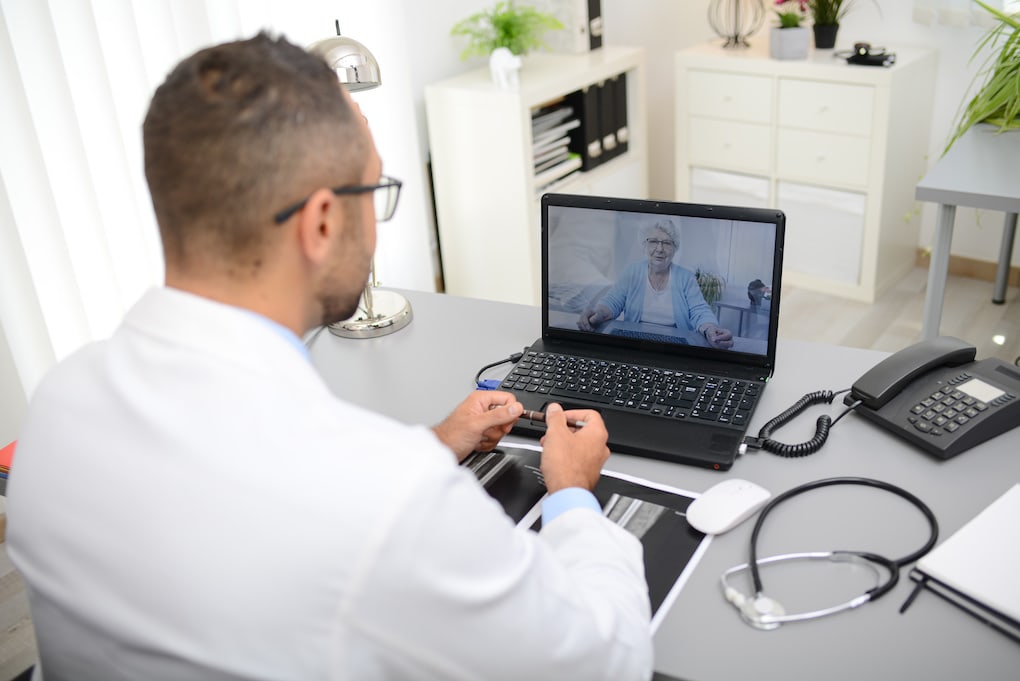
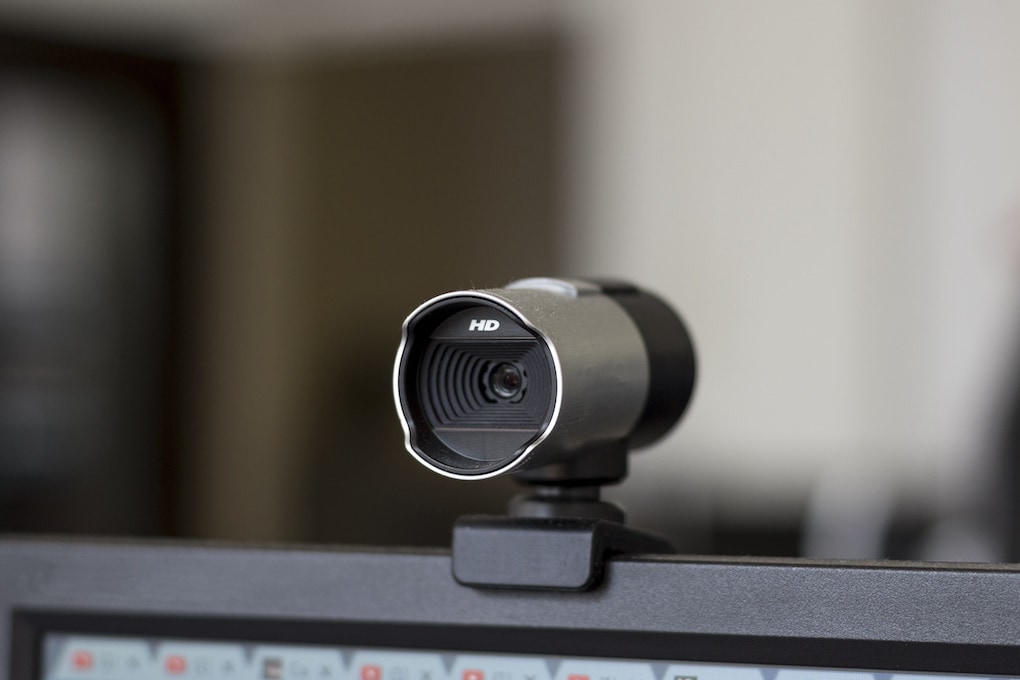
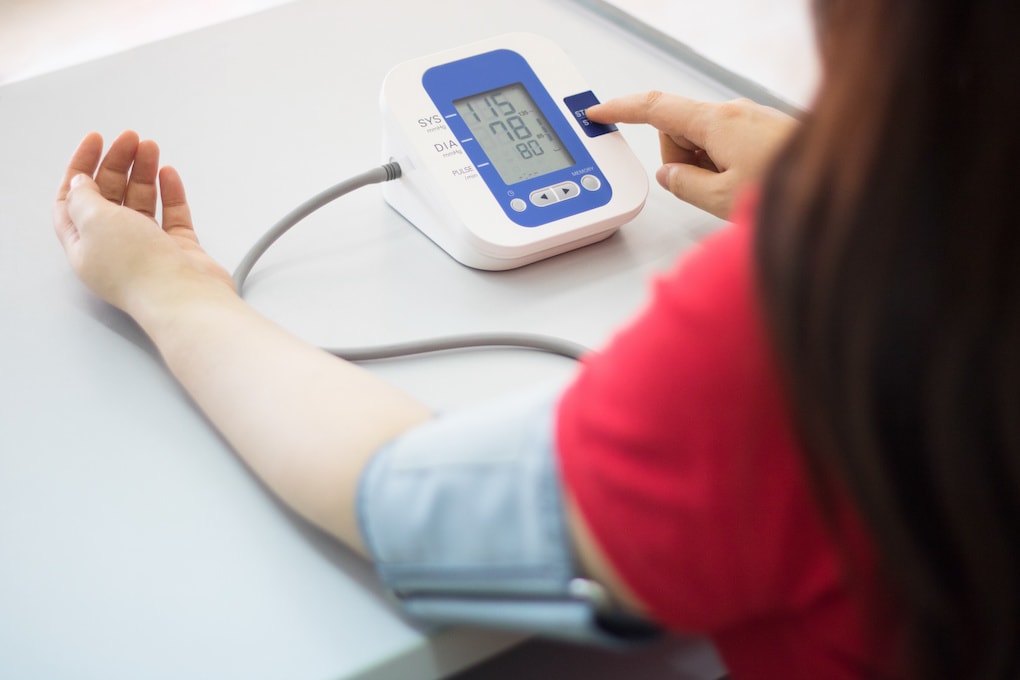

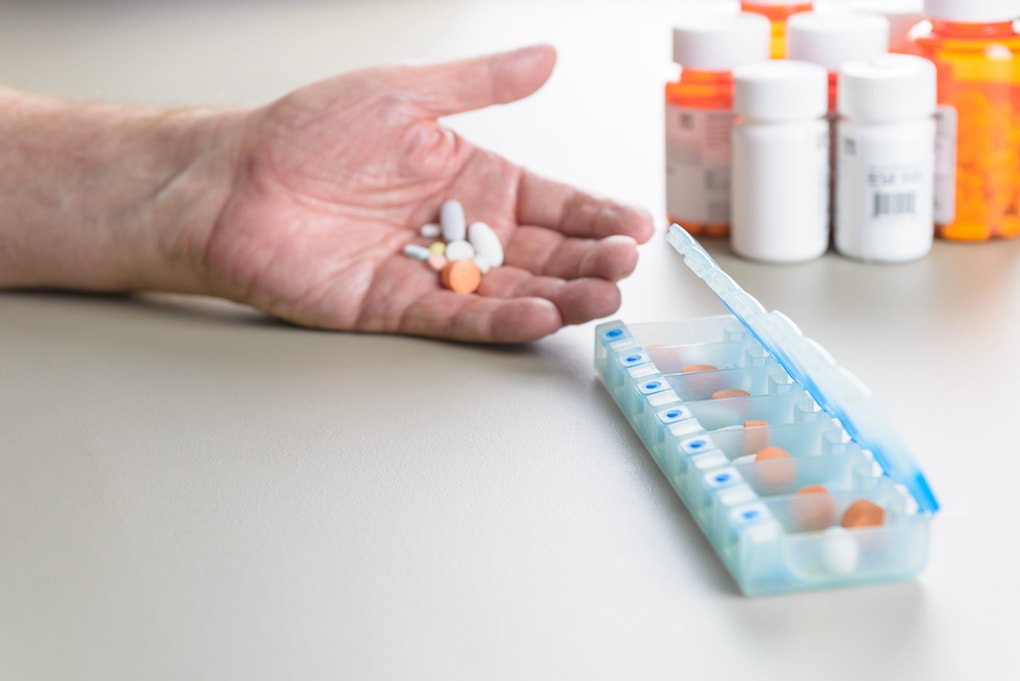

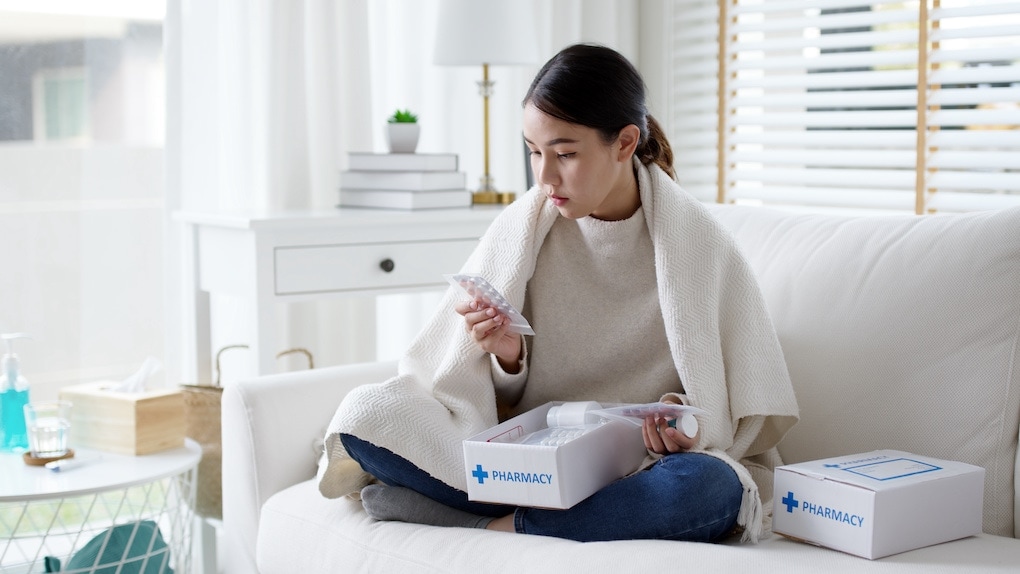
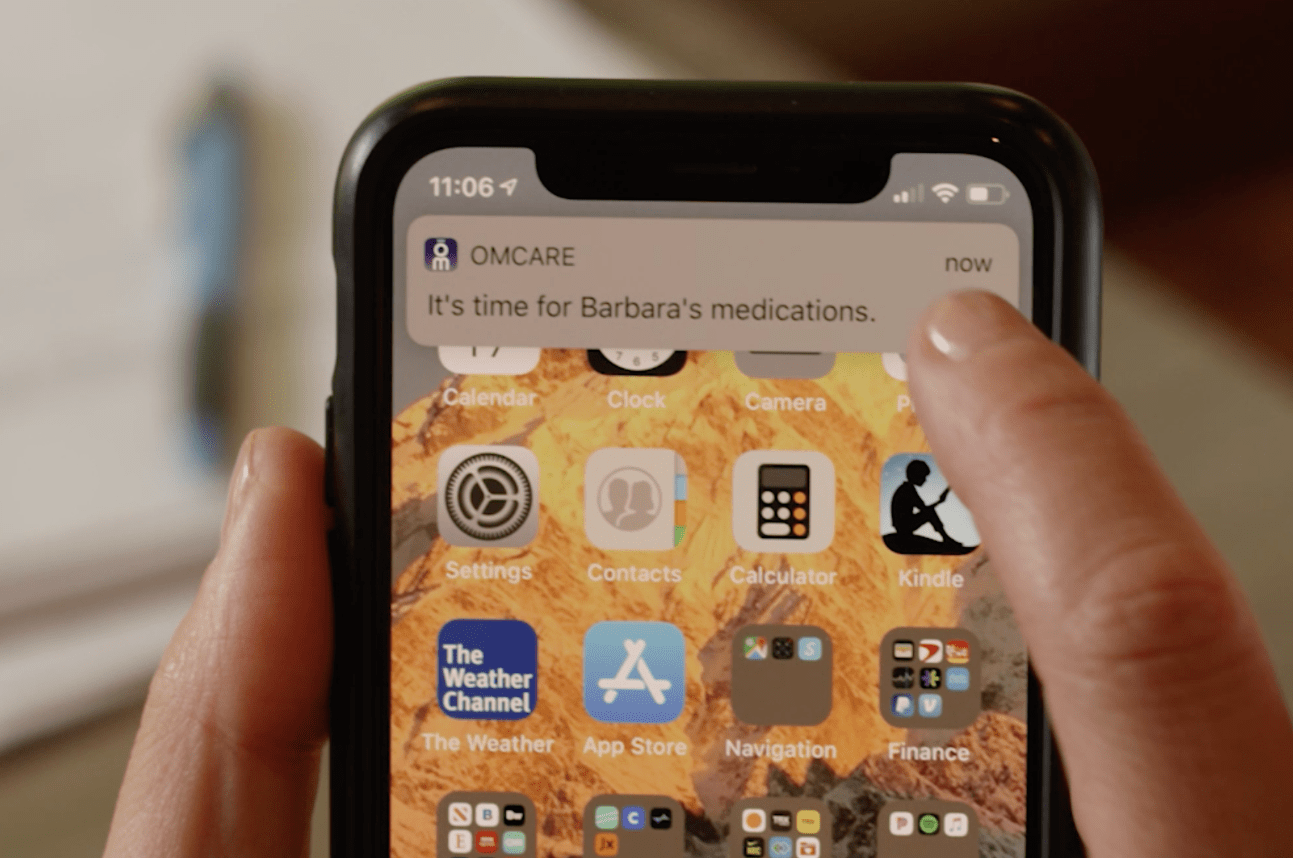

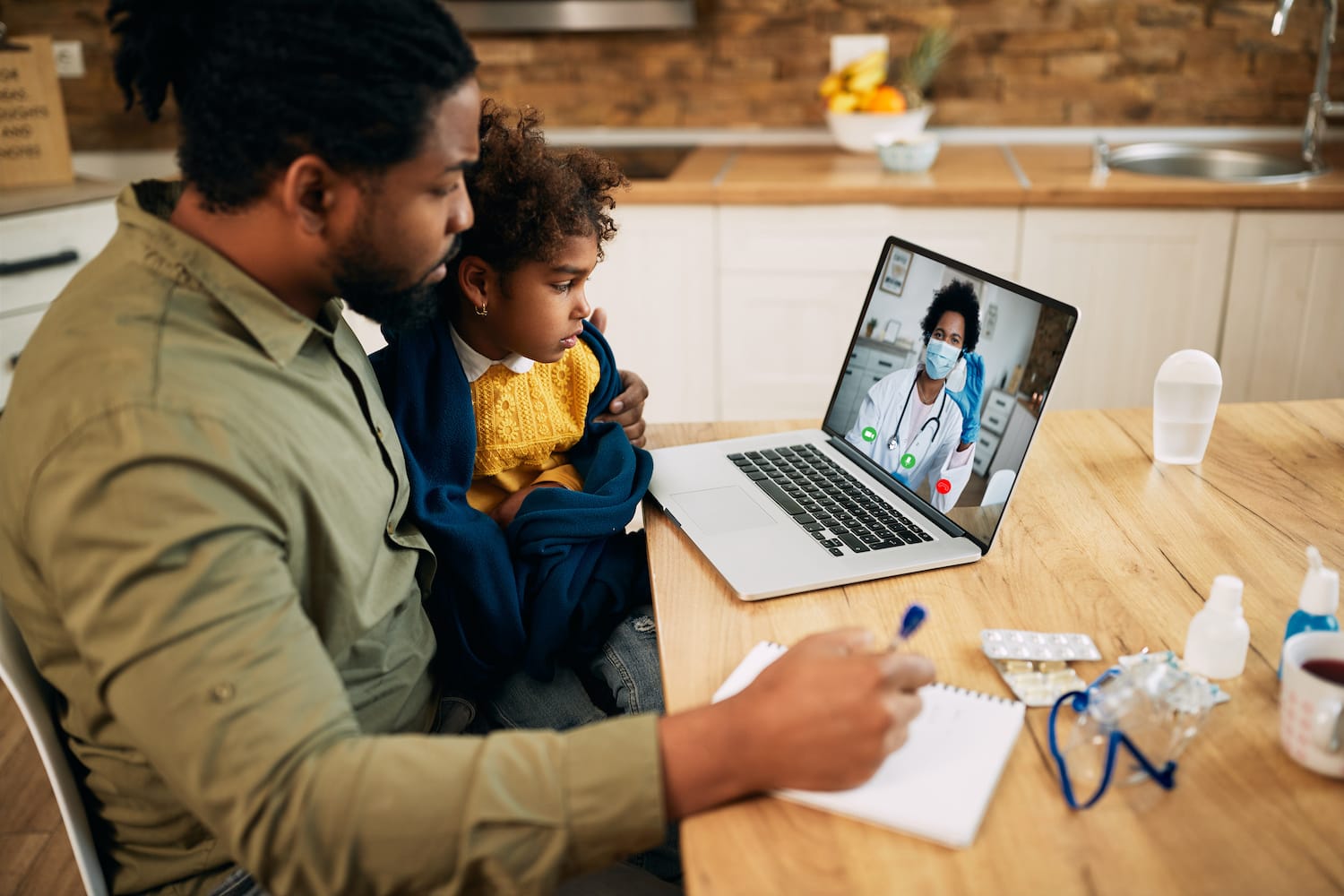
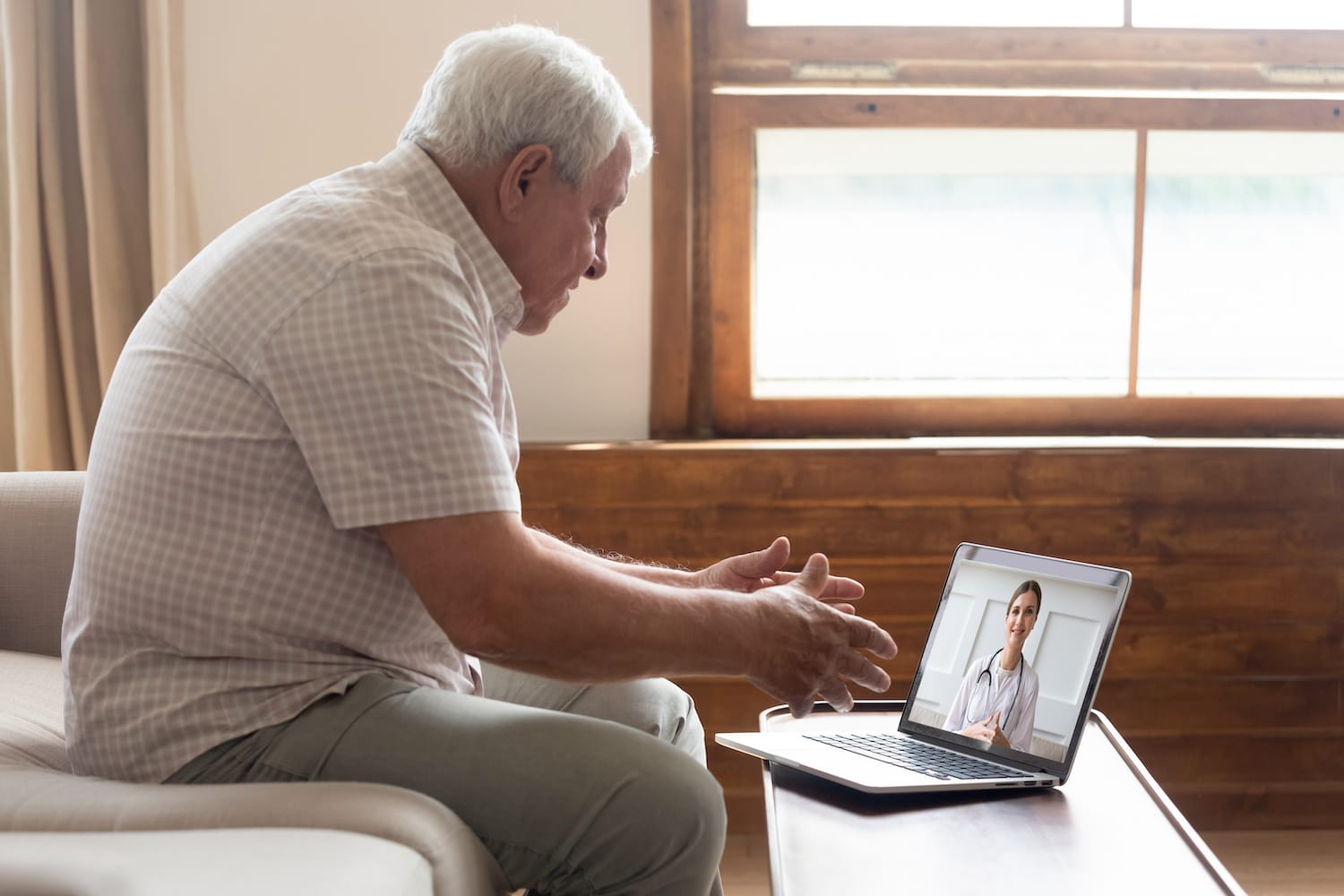
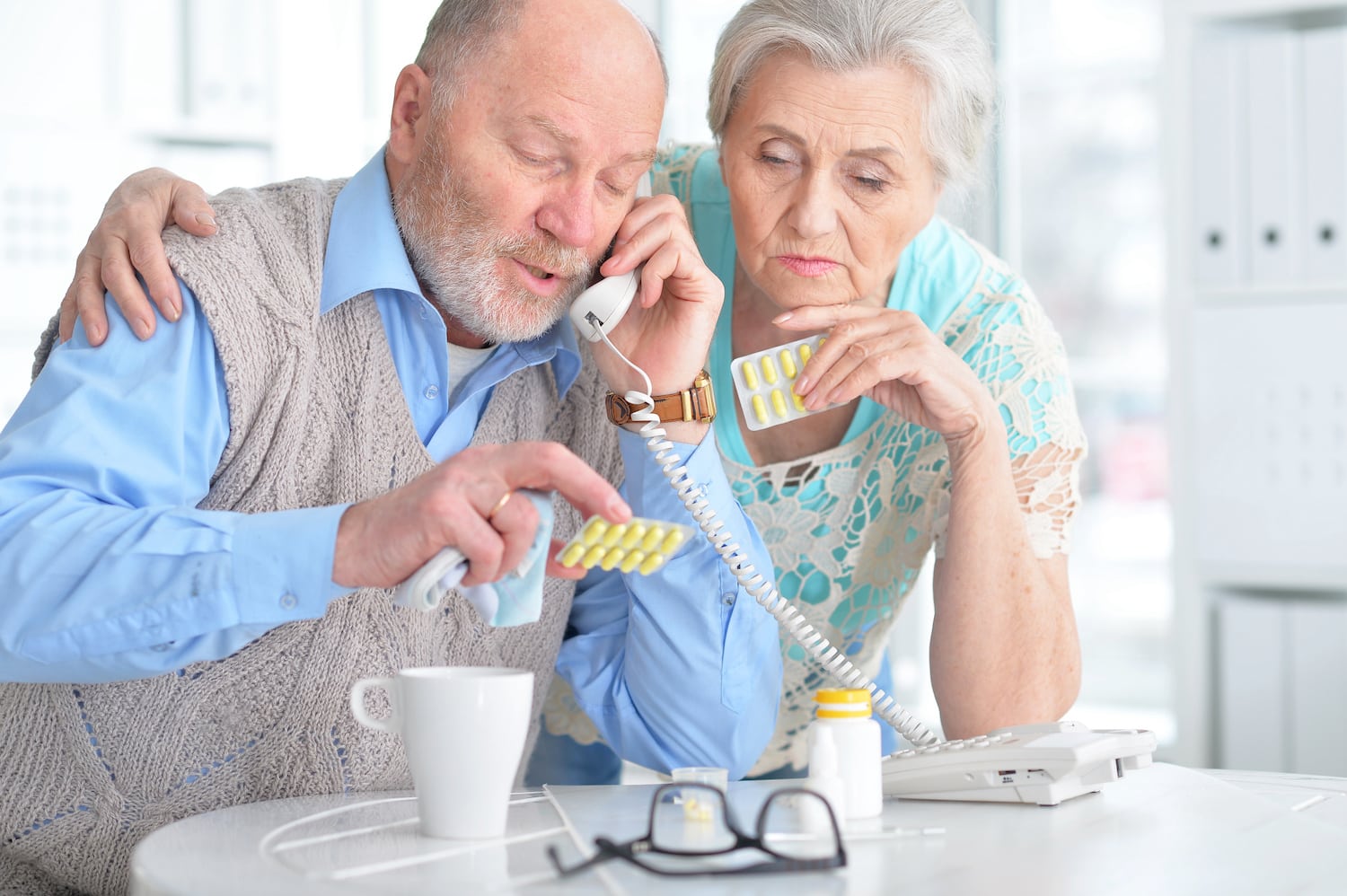


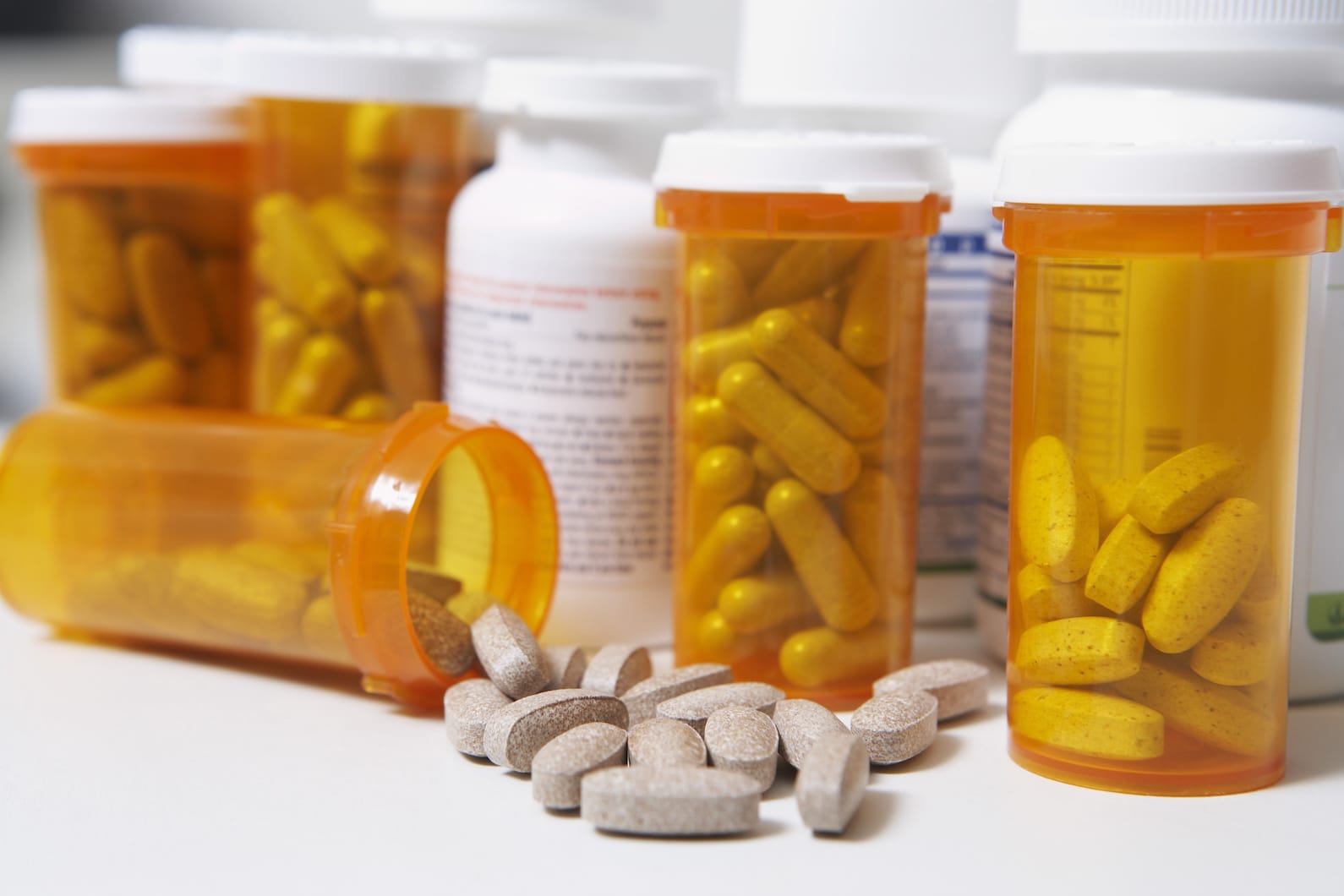
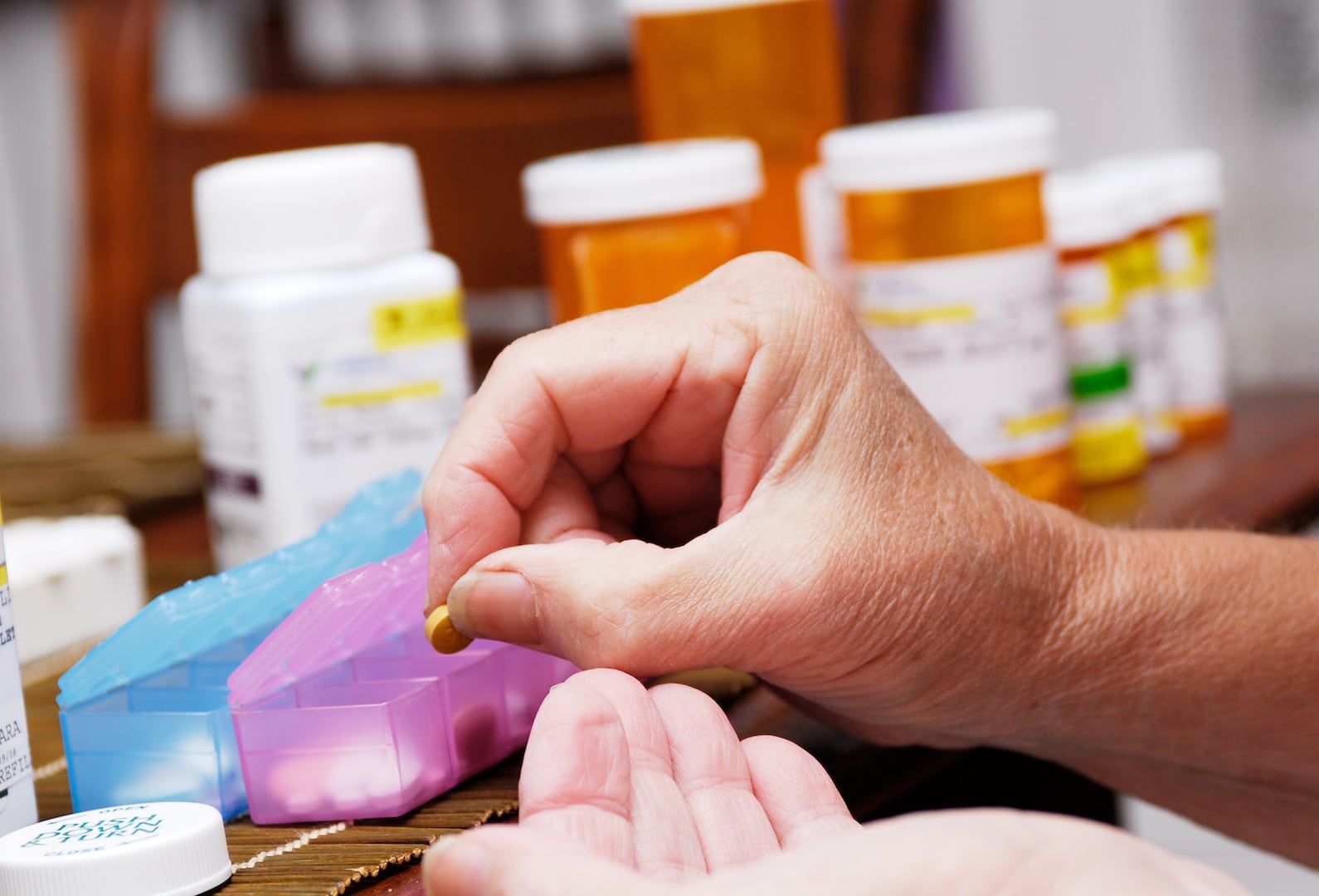

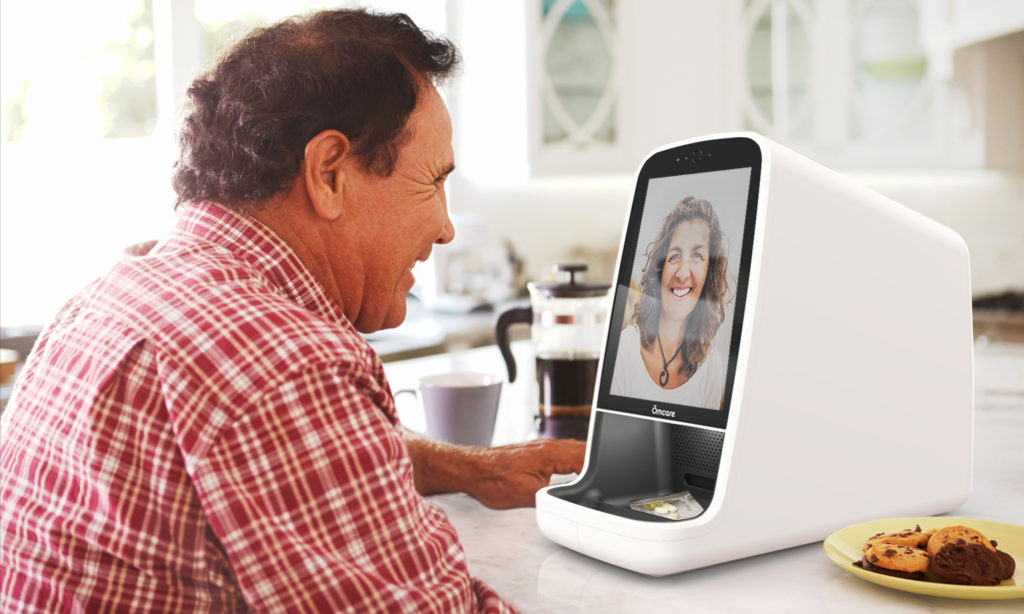

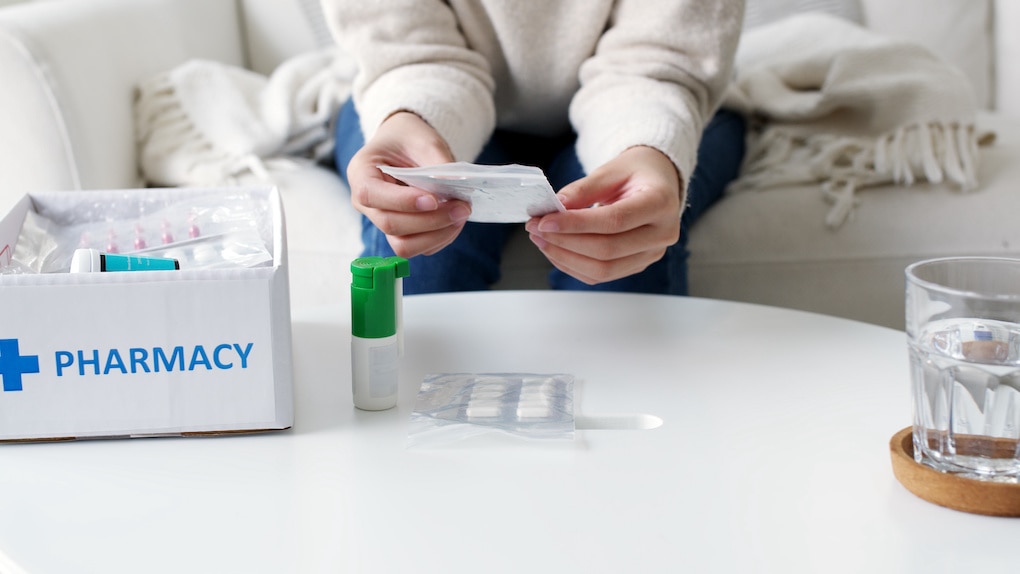
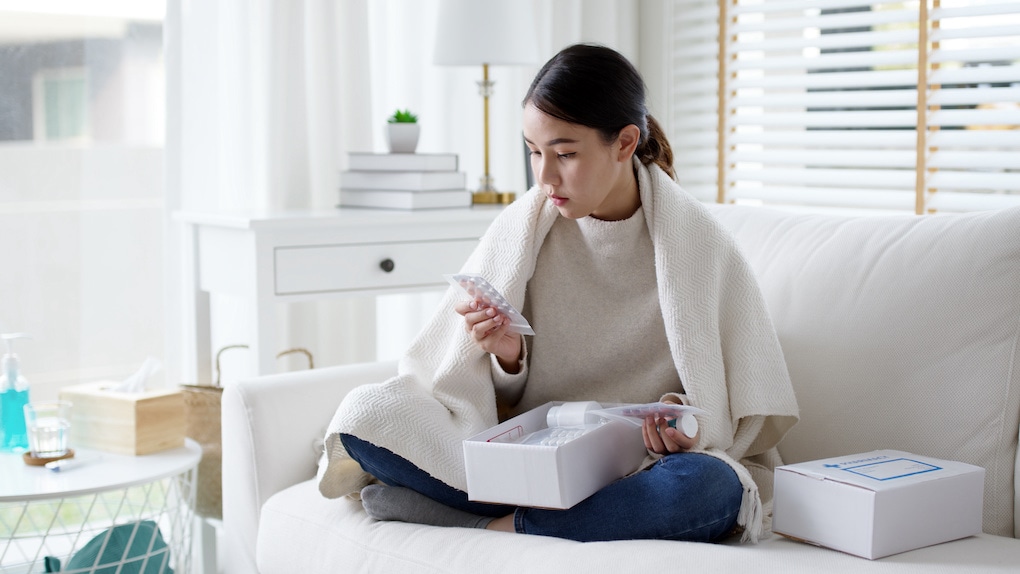
 Finding the Best for You
Finding the Best for You